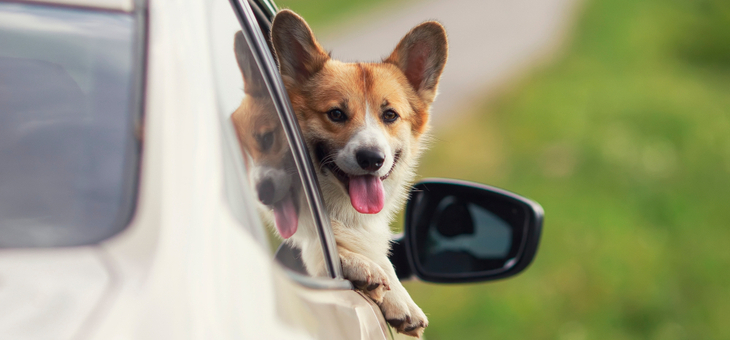A new study from the University of Adelaide suggests that compulsory testing of in-car dog restraints and better education about the dangers of having pets loose in the car are needed to ensure the safety of drivers and pets on road trips.
The study found that, while two thirds of Australians restrain their dogs when driving, this number varied depending on what state drivers lived in, their age, and the size of their dog.
And those who do restrain their dogs in the car are not guaranteed a safer ride.
While most Australian dog owners used a harness and tether attached to a seat buckle and drove with their dog in the back seats of the car, NRMA Insurance found that out of 25 harnesses tested, only two restrained a pet safely. This makes it difficult for dog owners to select the best type of restraint for their dog.
The highest proportion of owners restraining their dogs lived in NSW and Queensland (more than 70 per cent) with South Australia lower at 62 per cent. In South Australia, the law states that dogs must be restrained only when travelling in the back of a truck or ute. In no Australian state or territory is it compulsory to safely restrain dogs when driving with them.
People who did not always restrain their dogs in vehicles tended to be younger, drive less frequently, and have a larger dog.
Lead author, Dr Susan Hazel from the University of Adelaide’s School of Animal and Veterinary Sciences, said unrestrained dogs were a potential distraction as serious as using a mobile phone.
“Having an unrestrained dog in a car can lead to distraction of the driver,” Dr Hazel said. “We know the link between mobile phones and distracted driving; patting or turning around to look at your dog is likely to be just as bad.
“Even more importantly, if your dog is not restrained and you’re in an accident, your dog can be seriously injured or killed. If your dog becomes a projectile in an accident, other people in the car may also be seriously injured.”
Jess Dunduk, from Croydon Park, was driving at 60kmh when she had to brake hard for another driver and her greyhound, Peppa, went through the gap between the front seats and hit the dash.
“We were very lucky to only have minimal injuries. Peppa got away with bruises and I had a few scratches on my arm from her brushing past me,” Ms Dunduk said.
“To think, if we were travelling faster or had even hit the car in front, it’s terrifying. The experience has dramatically changed how I travel with dogs in the car. I only use tested harnesses for car travel with my dogs or crates. It is scary to think there are products on the market that have not been tested for a car accident.”
Do you tether your dog in the back seat when you travel on road trips? Have you ever had an accident with a pet in the car?
If you enjoy our content, don’t keep it to yourself. Share our free eNews with your friends and encourage them to sign up.
Related articles:
Travelling with limited mobility
Reconnect with the world
Best way to learn a language for free

